In the build-up to the Supercopa de España, Barcelona’s resounding 4-0 over Real Madrid in October was on everyone's mind.
Was that match a fluke?
Would Barcelona’s poor run of form to end 2024 hurt them?
How would Real Madrid's long list of injuries impact them in this match?
We came in with many questions but left with a resounding answer.
The Super Cup El Clásico reproduced the shock and awe of Barcelona’s victory over Madrid in La Liga.
This tactical analysis details how Barcelona’s more direct approach and Real Madrid's shambolic press led to another El Clásico thrashing.
Barcelona Vs Real Madrid Super Cup Lineups
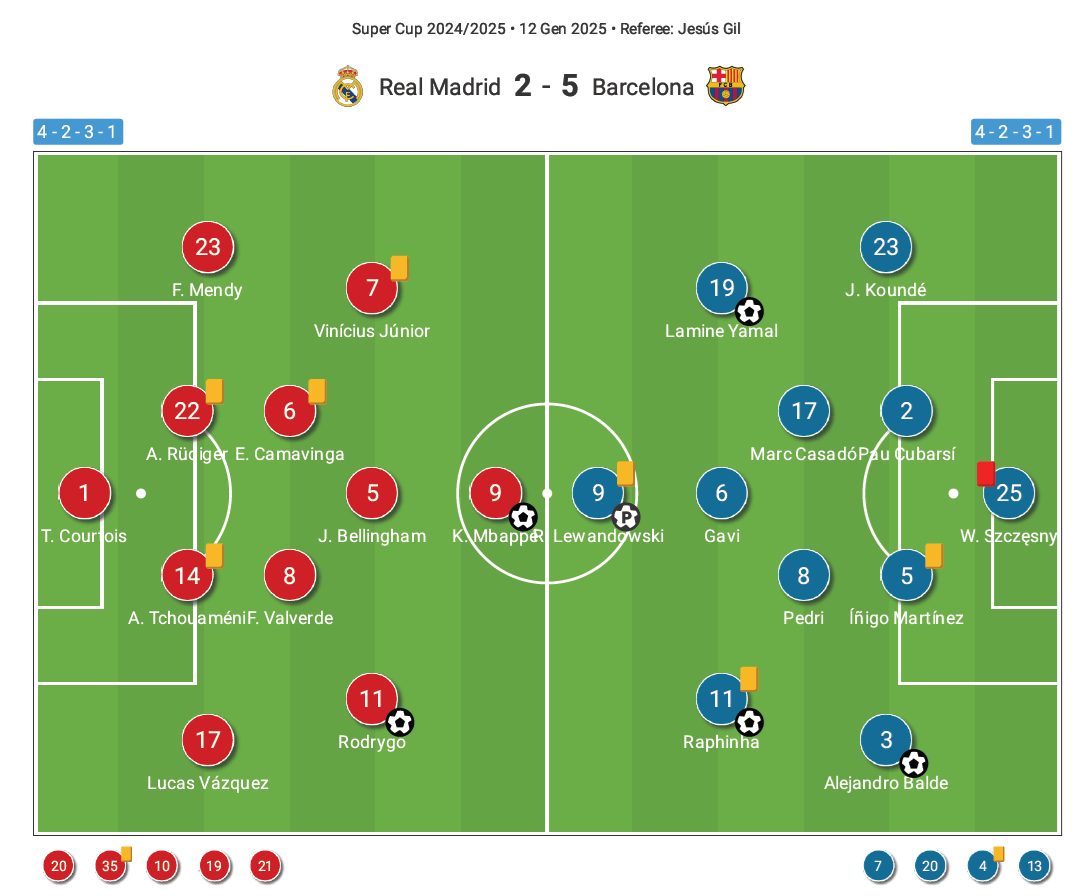
Real Madrid started in a 4-2-3-1 formation, with Thibaut Courtois in goal and a backline of Ferland Mendy, Antonio Rüdiger, Aurélien Tchouaméni, and Lucas Vázquez, from left to right.
It was a makeshift backline for Carlo Ancelotti, accounting for injuries at multiple positions, particularly losing out on Éder Militão, Dani Carvajal, and David Alaba.
In midfield, Federico Valverde and Eduardo Camavinga operated as the two pivots with Jude Bellingham in front of them.
Vinícius Júnior and Rodrygo started in the wings with Kylian Mbappé at the #9.
Hansi Flick’s Barcelona also played a 4-2-3-1, with Wojciech Szczęsny in goal in place of the injured Marc-André ter Stegen.
His backline consisted of Alejandro Balde, Iñigo Martínez, Pau Cubarsí, and Jules Koundé.
Marc Casadó and Pedri, who played at the base of the midfield, played more of a box-to-box role.
Gavi played the #10 with Raphinha to his left and Lamine Yamal to his right.
Robert Lewandowski rounded out the formation at the #9.
Barcelona’s Direct Play Catches Real Madrid Out
La Liga is synonymous with a possession-dominant style of play, and no club team is more associated with that particular philosophy than Barcelona.
Given the talent in this Real Madrid side, even with the injury crisis, there was good reason to think this could be a tightly contested match, with possession-based football creating a host of chances.
Expectations were high but surely not met.
But that's not to say there wasn't scintillating football on display.
It was a fast-paced, end-to-end match, with nearly every significant chance created through counterattacks or more direct pathways.
Some poor defending created these opportunities, which we'll focus on in the next section.
Nonetheless, the match produced an entertaining display of direct football, with Barcelona having more joy slicing through their opponents than Real Madrid managed.
In the build-up to Barcelona’s first goal, Lewandowski’s check into midfield created the line-breaking pass on the ground.
One thing to notice in the image below is the amount of space Real Madrid's midfield had to cover in the distance between them and the backline.
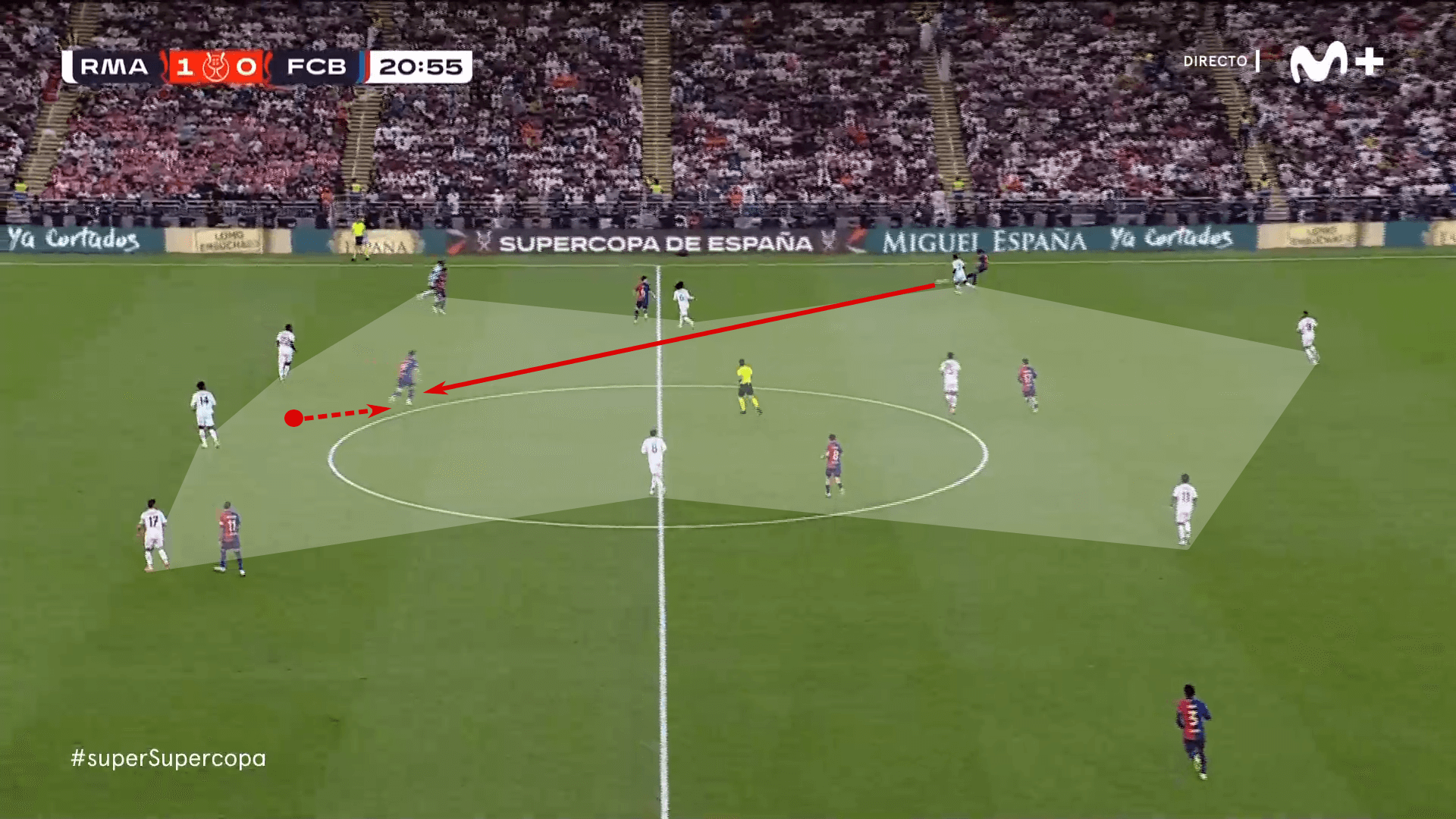
As the pass arrives at Lewandowski's feet, Rüdiger steps forward, creating a gap behind the Madrid backline.
Lamine Yamal did well not only to run into that gap but also to position himself inside Mendy, who was cheating forward for some unknown reason.
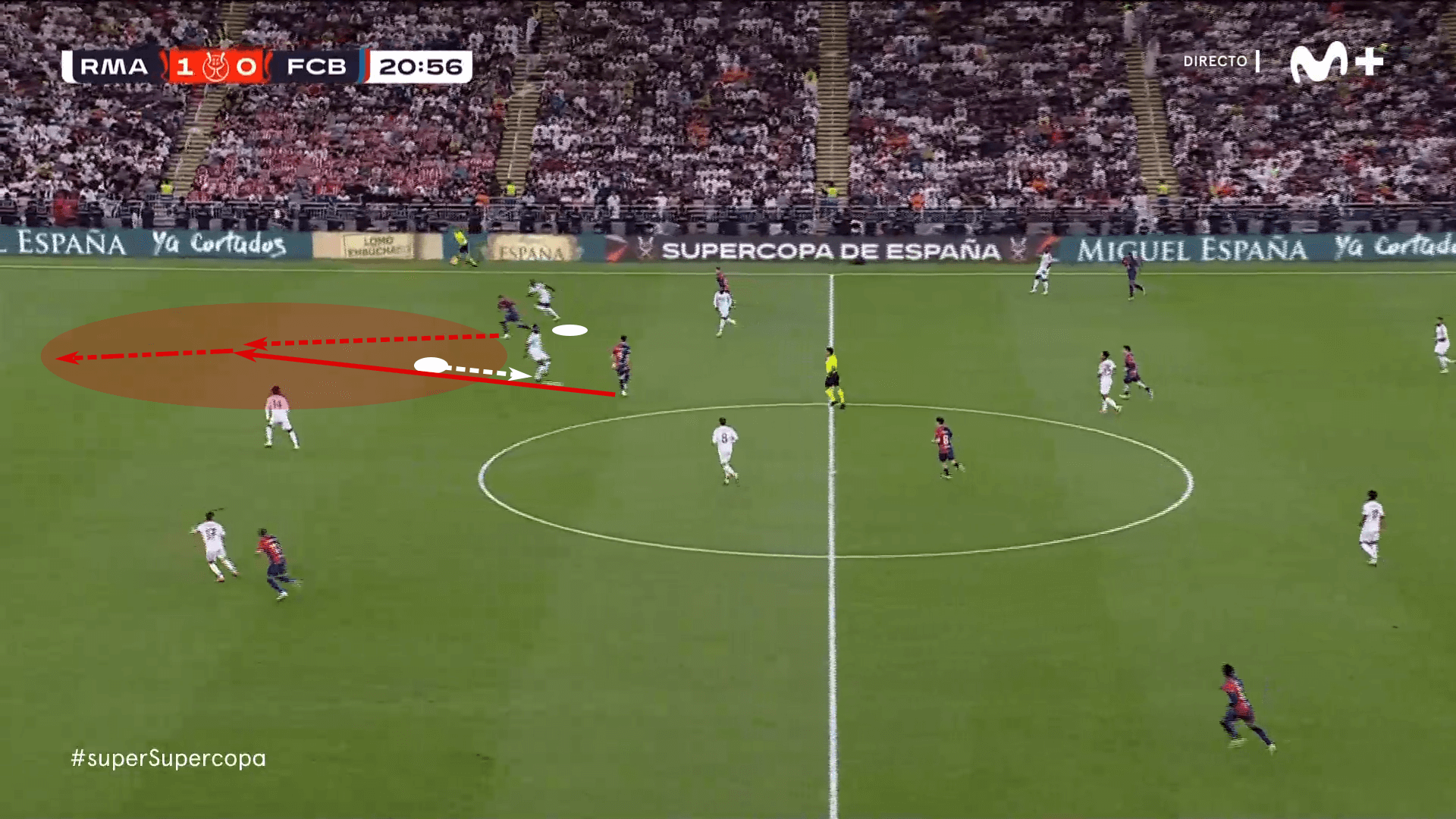
It's a fantastic pass from Lewandowski and a brilliant finish to the play by Lamine Yamal.
There are certainly questions to ask of this Madrid backline, but credit is still due to the Barcelona forwards for creating the space and finishing the sequence with the goal.
The lack of pressure Real Madrid applied on the ball heard them throughout the match.
Barcelona’s first goal saw them carve through the Madrid lines while keeping the ball on the ground, but the third goal was the most spectacular.
Rather than playing through Los Blancos, La Blaugrana went over the top with an early cross.
The goal came shortly after a turnover for Real Madrid on a long pass forward.
A poor counter-press and recovery into their defensive shape left Rüdiger with two forwards in front of him, causing Tchouaméni to drift in support.
What the Frenchman forgot to do, let's check his shoulder and see the run of Raphinha, as well as the distance between the Brazilian and Vázquez.
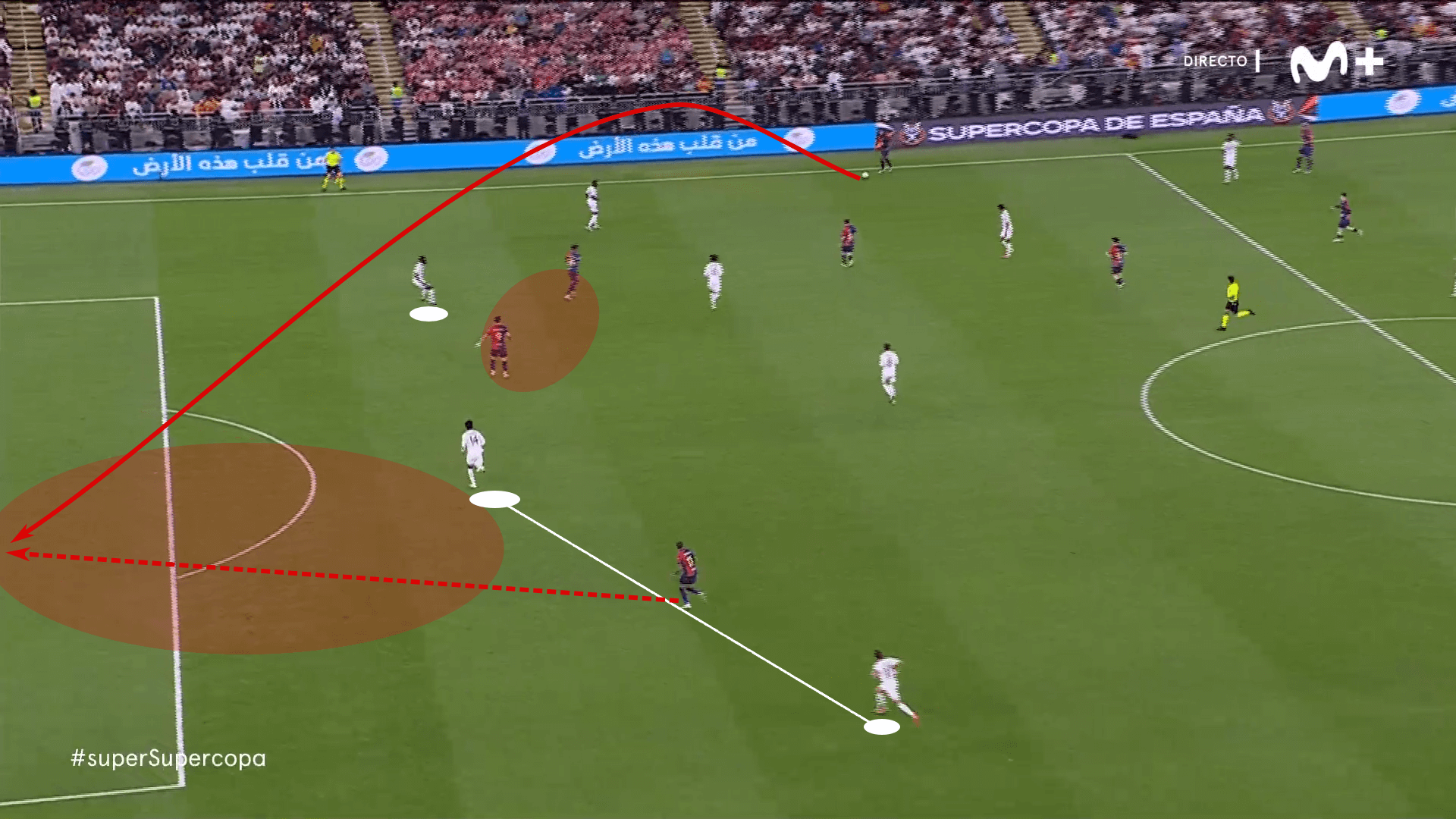
The service was spectacular, and the header was sublime.
With so much time on the ball, Barcelona routinely picked out their high targets and took a more direct path to goal.
Real Madrid couldn't stop them, so the match tactics of playing in a more direct style paid off handsomely.
Given Szczęsny’s red card in the 56th minute, Barcelona largely defended for the remaining 42 minutes, which gives some context to the progressive pass map below.
Most of these passes come in the 1st 56 minutes, whereas Real Madrid saw an increase after the red card, given the drastic increase in possession percentage and the need to push the tempo while down three goals.
Real Madrid Vs Barcelona Progressive Passes Map
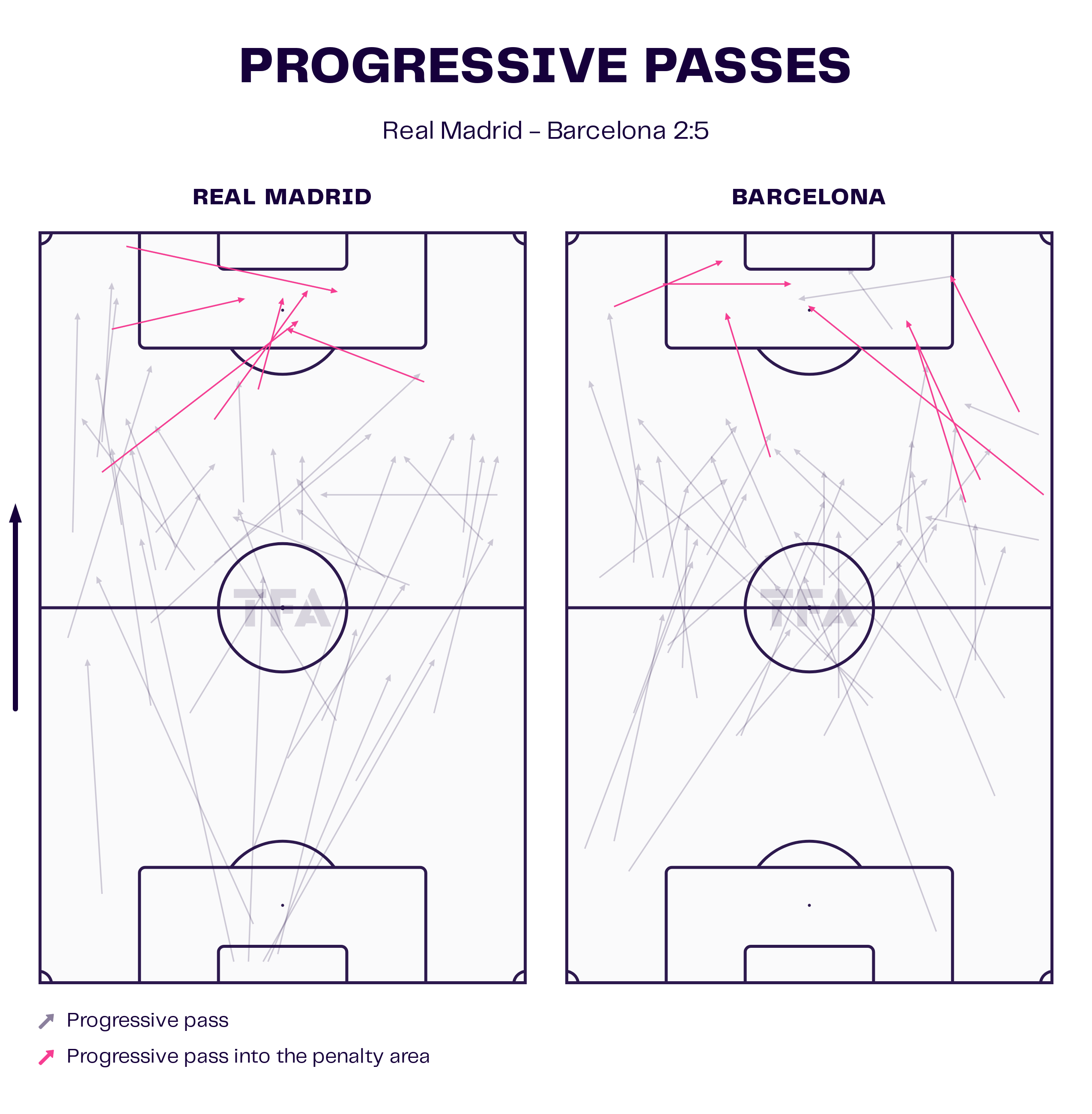
Madrid did have some success getting behind the Barcelona backline as well.
The first goal came off the back of a Barcelona corner kick, leading to a fantastic individual effort.
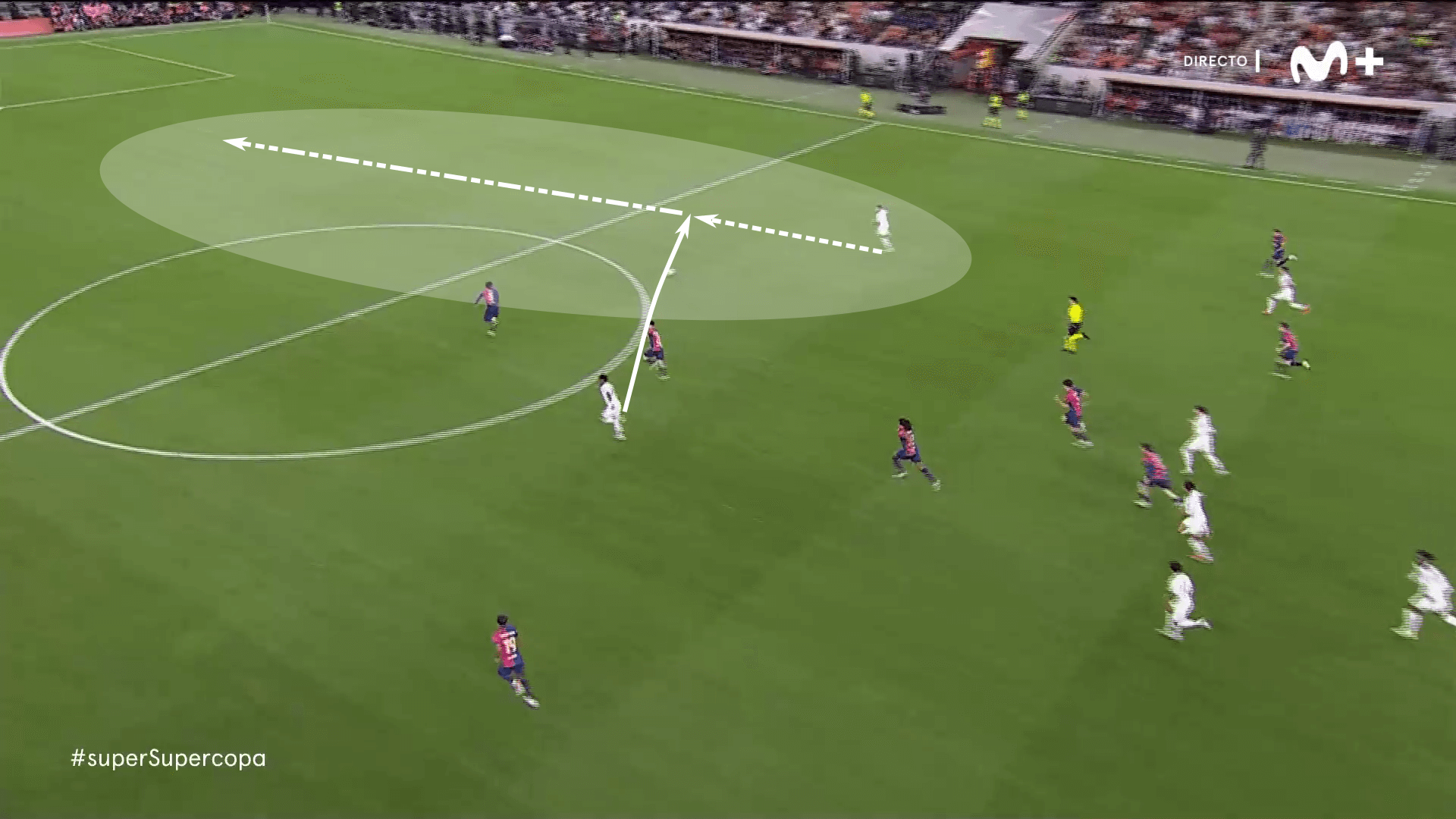
The Frenchman was played through again in the second-half, drawing Szczęsny's red card for a poorly timed tackle as the last defender.
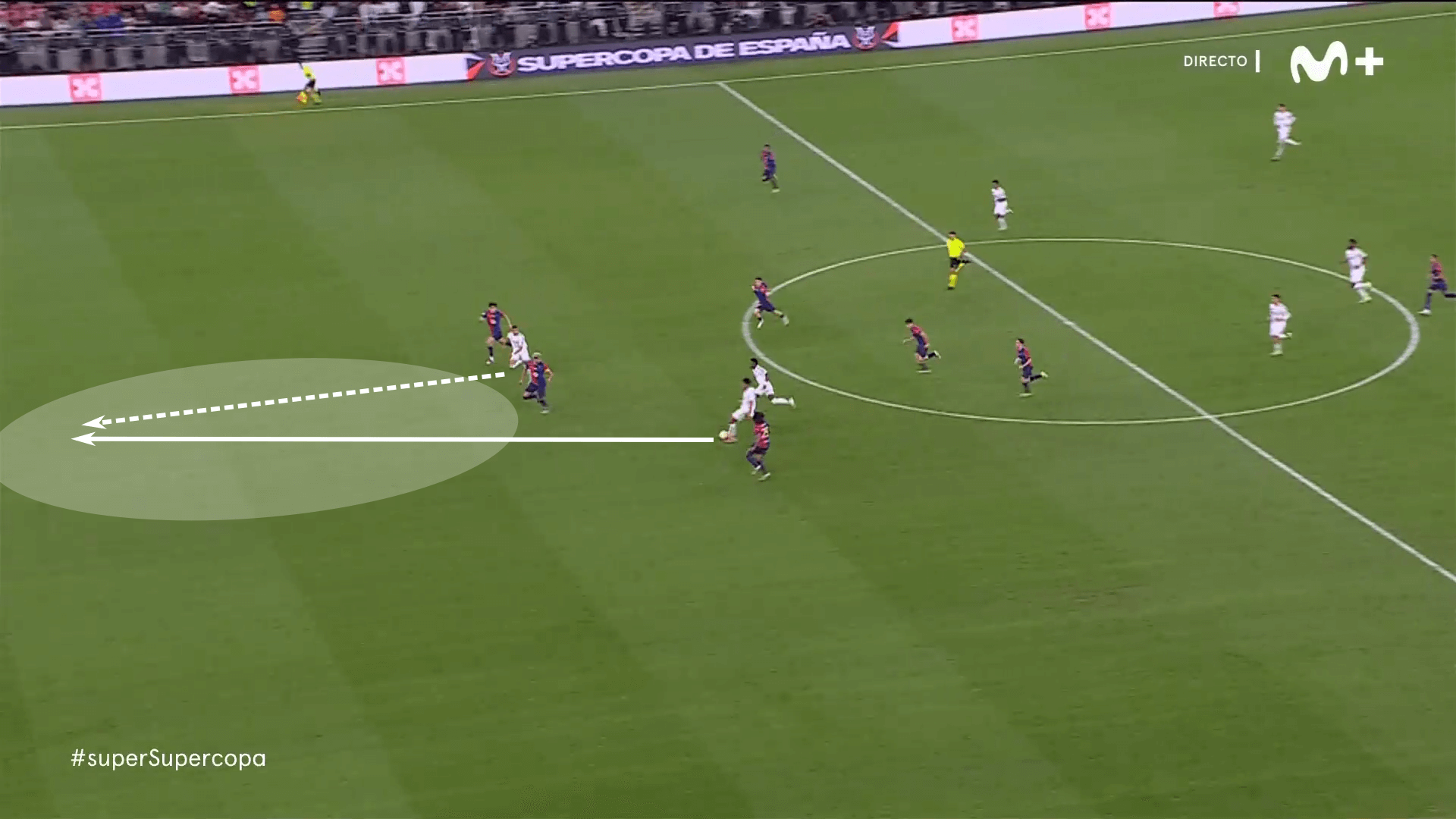
Barcelona had a few miscues, which led to Real Madrid's opportunities to get behind the backline and create their two goals.
It's a point of concern for Flick, one that he must address as we head into the second half of La Liga and into the knockout rounds of the Champions League.
That said, Ancelotti will surely be the more concerned of the two managers.
Whether in a high press, defending mid-block with numbers behind the ball, or counter-pressing, this Real Madrid side looked disorganised and vulnerable.
Whether playing through the Madrid lines or attacking the space behind, Barcelona ran riot in this match.
Real Madrid simply couldn't stop their more direct approach.
Issues with Real Madrid’s Press
Let's talk about the Real Madrid press in more detail.
It really was horrendous and needs to be addressed immediately.
One of the issues is simply the limited work rate of Vinícius Júnior, Mbappé, and Bellingham.
When three out of the 1st four pressers are frequently out of position, late to act, and lose track of their direct opponent, the high press is bound to fail.
Good sides will find the gaps and keep Madrid chasing, which is exactly what Barcelona managed in this Super Cup edition of El Clásico.
Interestingly, Real Madrid frequently leaned on the man-oriented approach in defence.
While it has worked against lesser sides, Barcelona invited this less compact approach to defending and picked Madrid apart.
Barcelona’s fifth goal gives us the perfect camera angles to assess Real Madrid's defence.
As Barcelona starts their possession from the back, the thin white lines show the marking responsibilities of the Real Madrid players.
You'll notice there is one Barcelona player, Balde, who is free in the left wing.
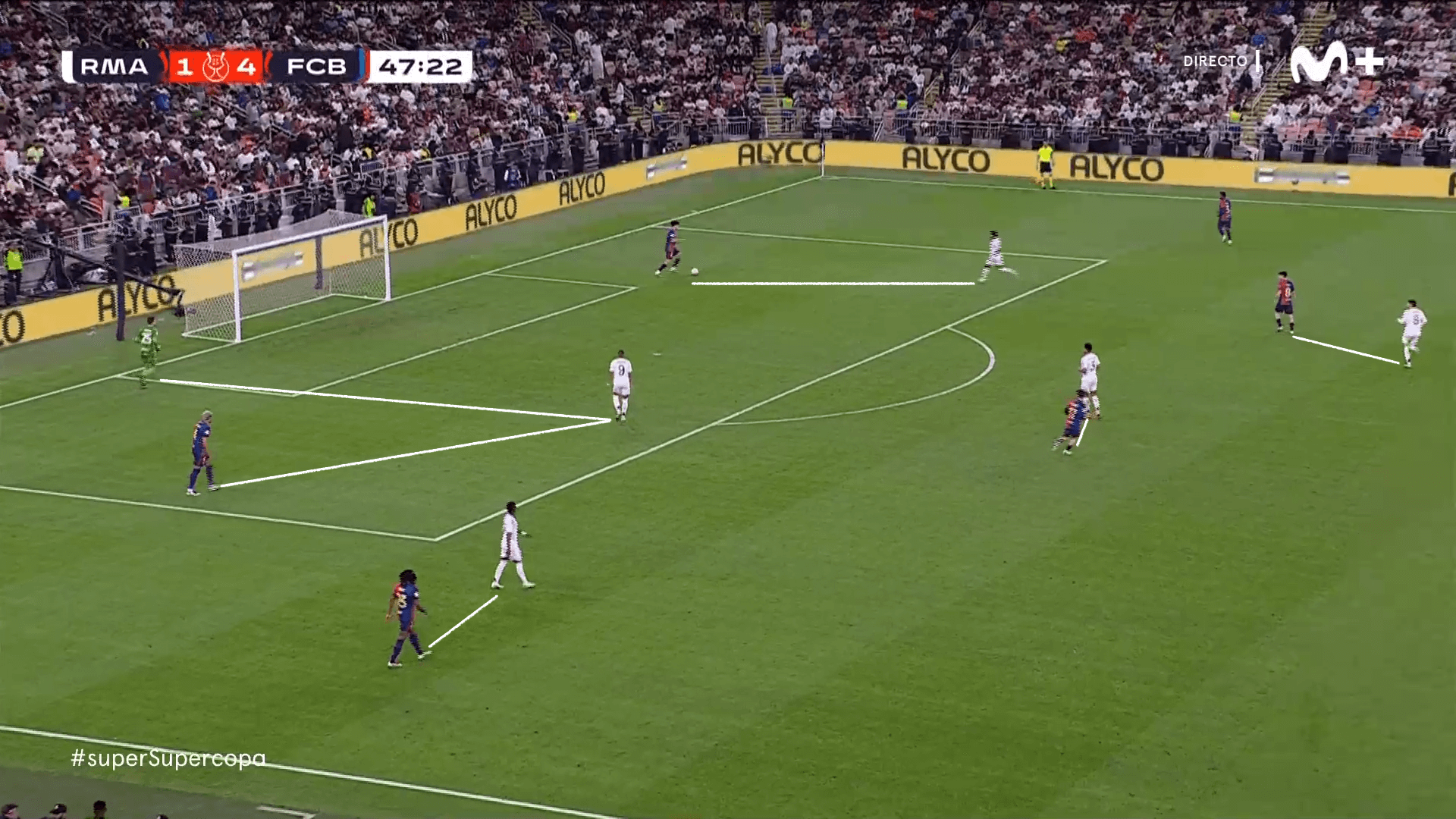
As the pass is played into Balde, it's Vázquez who sprints forward to apply pressure.
The issue is that he's late arriving, and as he pushes forward, he leaves a lot of real estate behind him.
This scenario would not be as dangerous if Real Madrid's lines were compact and the midfield could cover the space Vázquez left behind.
But the midfield isn't able to cover and the backline is in shambles.
While the thin white lines still show us the marking responsibilities, the circles show us where the members of the Madrid backline are positioned.
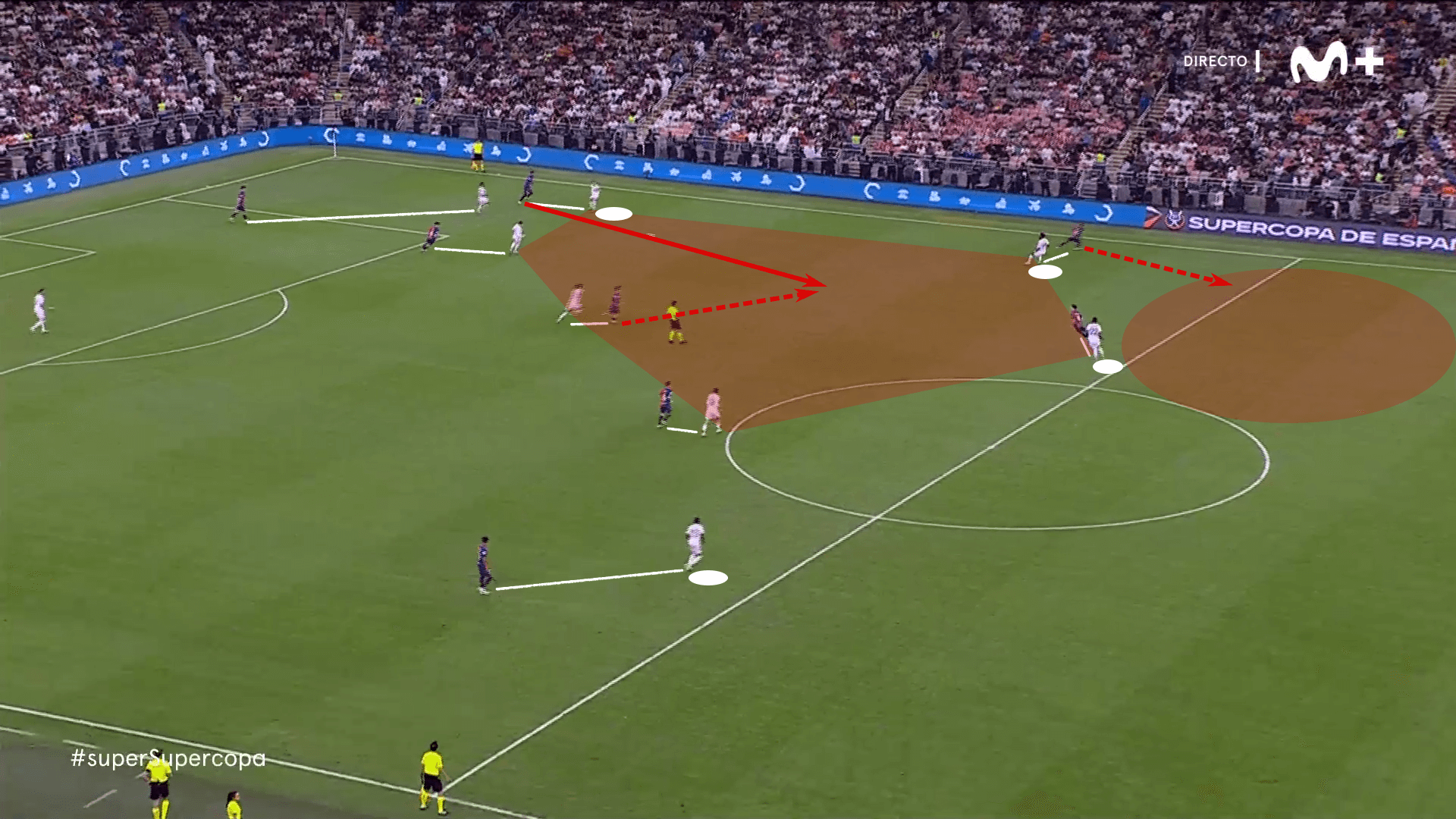
Vázquez is 20 meters from the endline, and Tchouaméni is five meters from the right touchline, allowing Raphinha to drift behind him.
Although Rüdiger is the lone central player, he is still offset in the right half-space.
Mendy is on the left in no man's land, keeping to his tight marking assignment on Lamine Yamal.
As the passes played forward to Pedri, he slips Raphinha beyond Tchouaméni on his first touch, setting up the foot race toward goal.
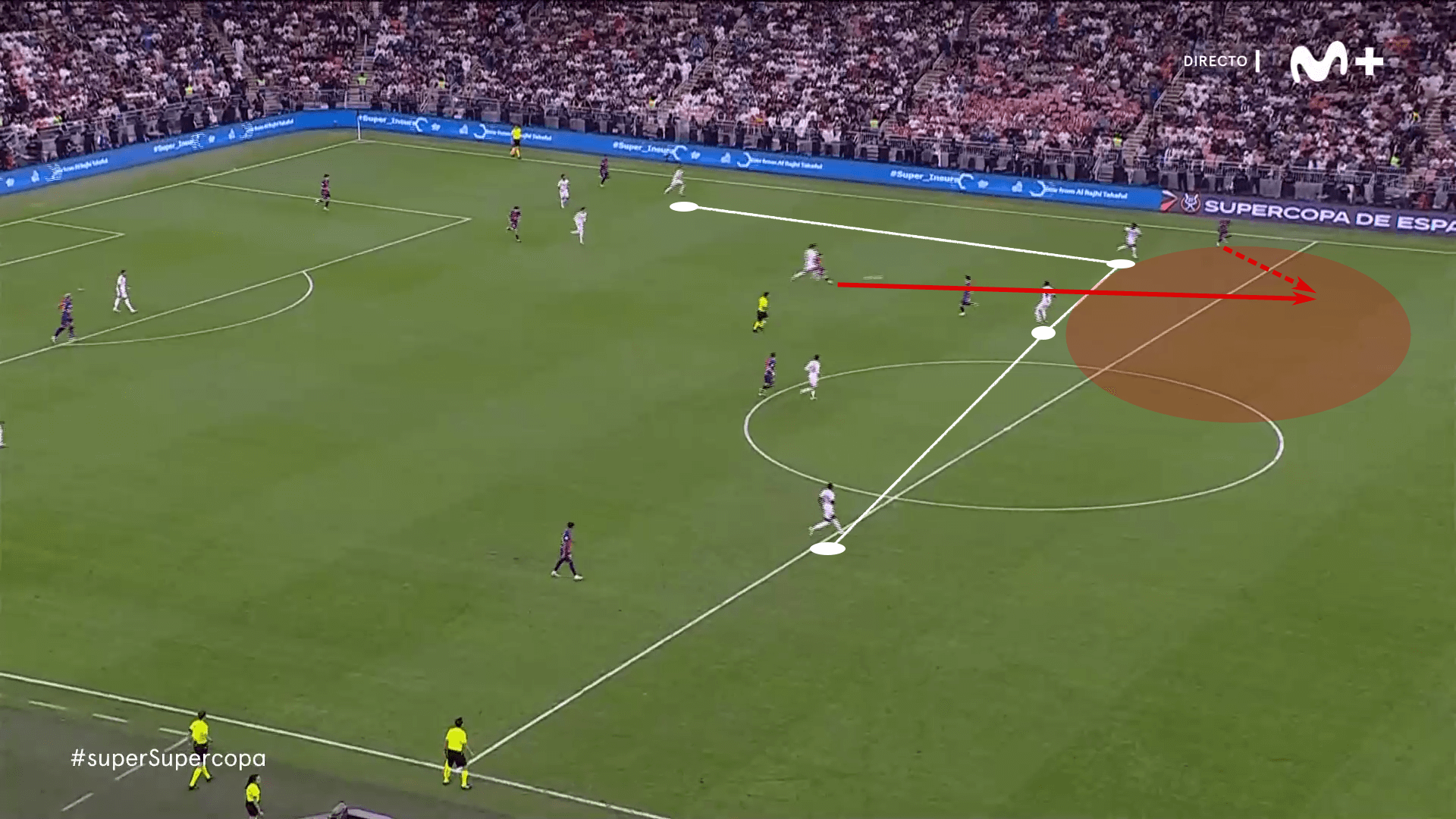
In addition to poor positioning across the pitch, it's a sequence of late responses, losing track of marks as they drift into dangerous spaces behind their defender, poor body orientation to recover behind the ball, and the total absence of coverage that sealed Real Madrid's doom.
Even when Real Madrid had numbers behind the ball in the mid-block, poor pressure on the 1st attacker and the inability to prevent Barcelona from breaking lines was a constant issue for Madrid.
In the image below, we see the poor positioning of Vinícius Júnior, who's not even part of the press, as well as Mbappé and Bellingham looking on as casual observers.
That increases the workload of the seven players behind the ball.
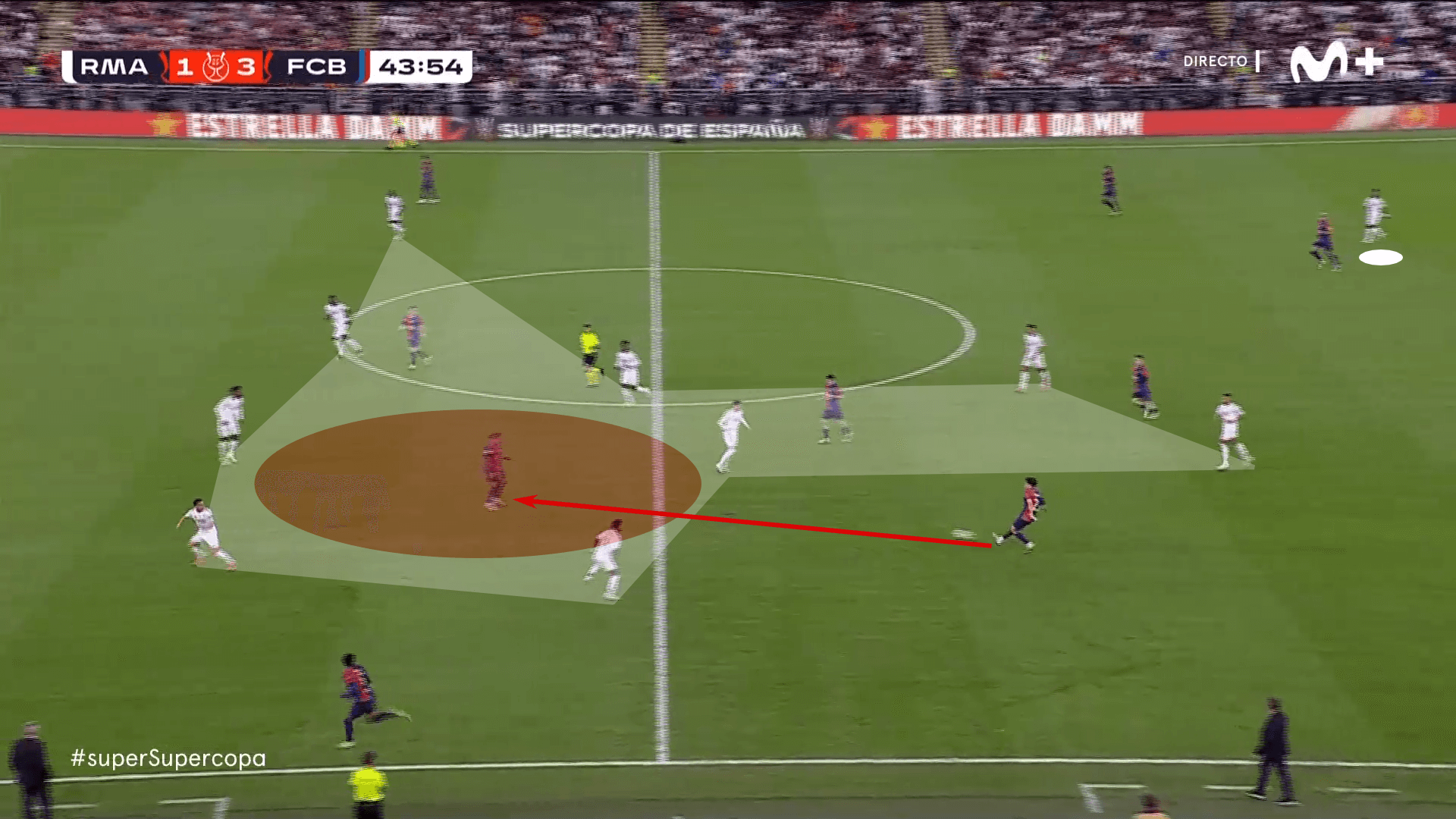
Calm and collected, Barcelona isn't troubled by the disorganised press.
They quickly play through the midfield and then move centrally into the unoccupied space in the centre of the pitch.
Pedro flicks a simple pass from Cubarsí onto Gavi's run between the lines.
With two passes, an entire line is beaten, and Madrid has three central players to contend with three Barcelona players, all while on a recovery run towards their own goal.
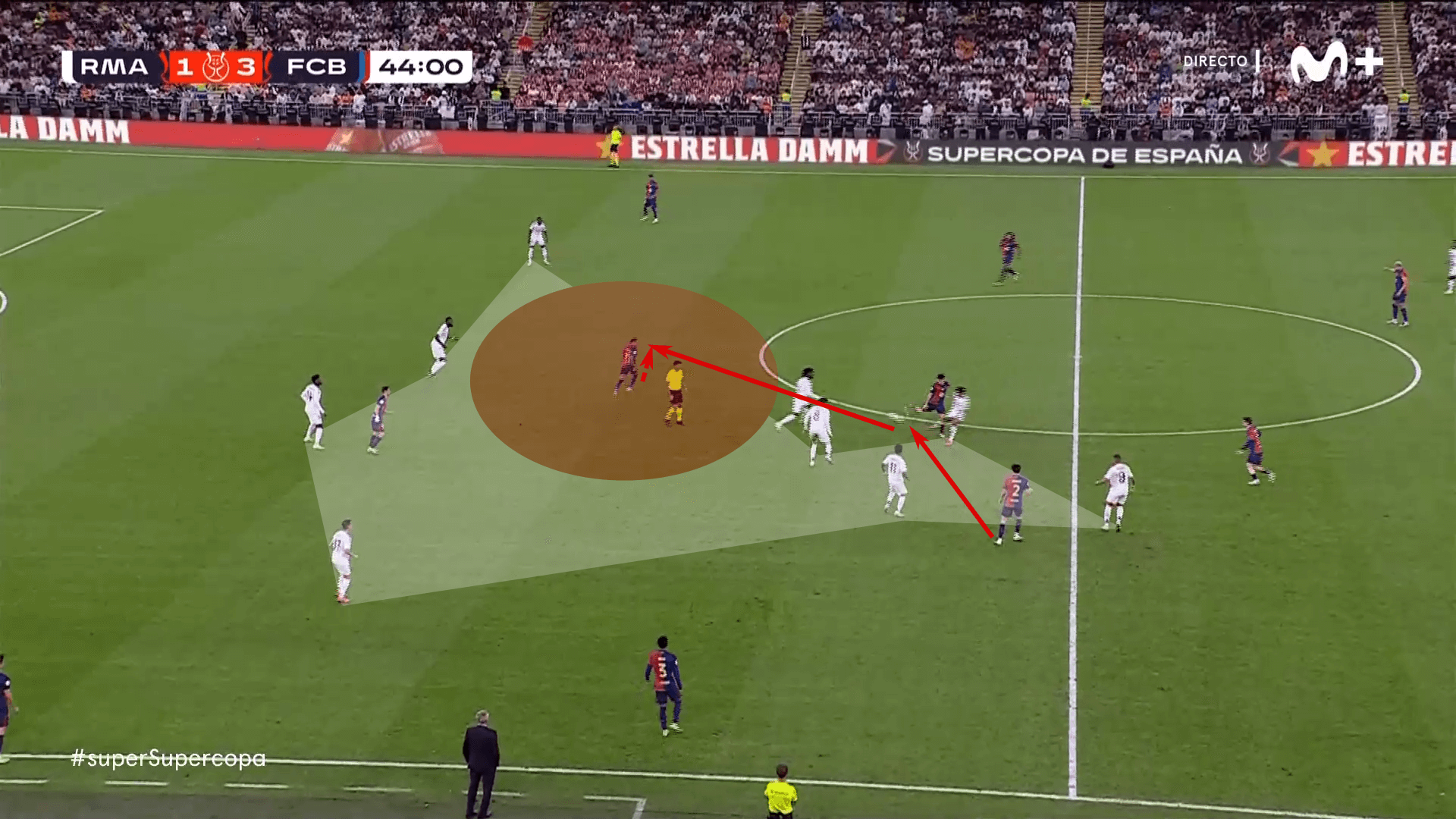
While Barcelona controlled the match through possession until their red card, Real Madrid certainly didn't throw many obstacles in their path.
In addition to its poor defending, Madrid was also poor in possession.
It struggled to break down a resolute Barcelona press and turned the ball over with long-range distributions from the back.
As a result, Barcelona had more of the ball and found their joy in picking this Madrid press apart.
Barcelona’s Final Third Composure, Real Madrid’s Wastefulness
Once Real Madrid scored their second goal, which came from the foot of Rodrygo from the same direct kick where Szczęsny was sent off, there was a thought that this match could get interesting.
Credit to Barcelona.
They adapted well, and we were disciplined in setting their lines, limiting the number of clear looks Real Madrid had at goal.
But that's not to say Real Madrid didn't have their chances.
They certainly did, and the non-penalty shot chart and xG totals attest that they had their opportunities.
Barcelona Vs Real Madrid Shots Map

One of the biggest differences between the two teams was simply the degree of composure in the box.
Barcelona was ruthless, constantly creating threatening opportunities through the 1st 56 minutes.
Even when they didn't score, it was typically due to an extraordinary save by Courtois rather than poor finishing by Barcelona.
Just before the corner kick that produced the Real Madrid goal, Barcelona nearly had their opener.
One thing Barcelona did well was put their wingers into direct matchups with Real Madrid's outside-backs.
La Blaugrana enjoyed a tremendous qualitative advantage in these matchups and often found ways to prevent the centrebacks from offering support.
They created opportunities like the one we see in the scenario below.
As the cross is played into the box, Raphinha is 1v1 against Vázquez at the far post.
While Barcelona doesn't send many crosses and Raphinha isn't the biggest winger, he outmuscled Vázquez in this scenario, throwing the Spaniard off balance and reeling him backward.
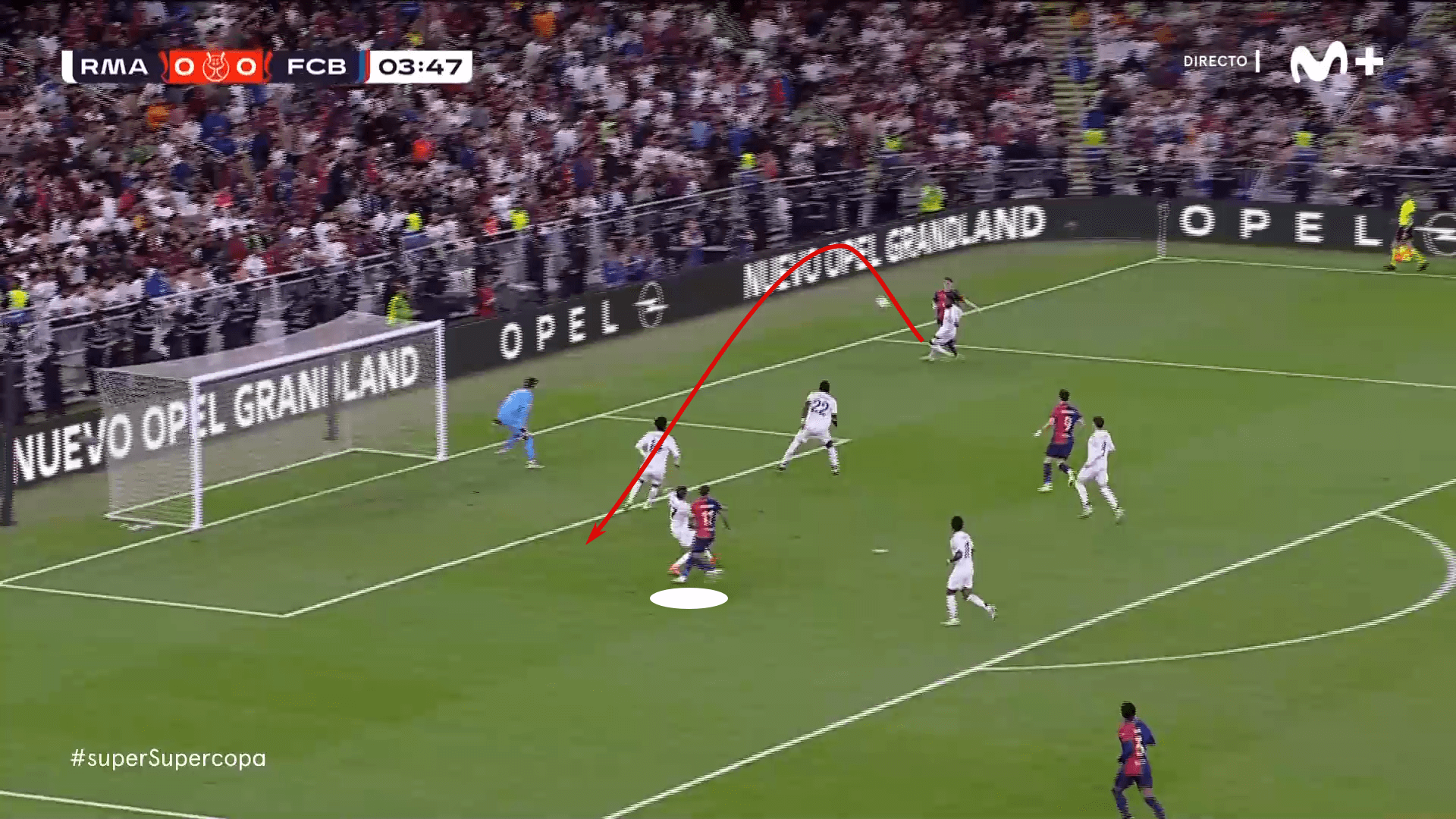
That created a massive gap between Vázquez and Tchouaméni.
Raphinha met the cross from six meters out and sent a difficult, bouncing header to Courtois's right, which the Belgian just managed to push wide of the goal.
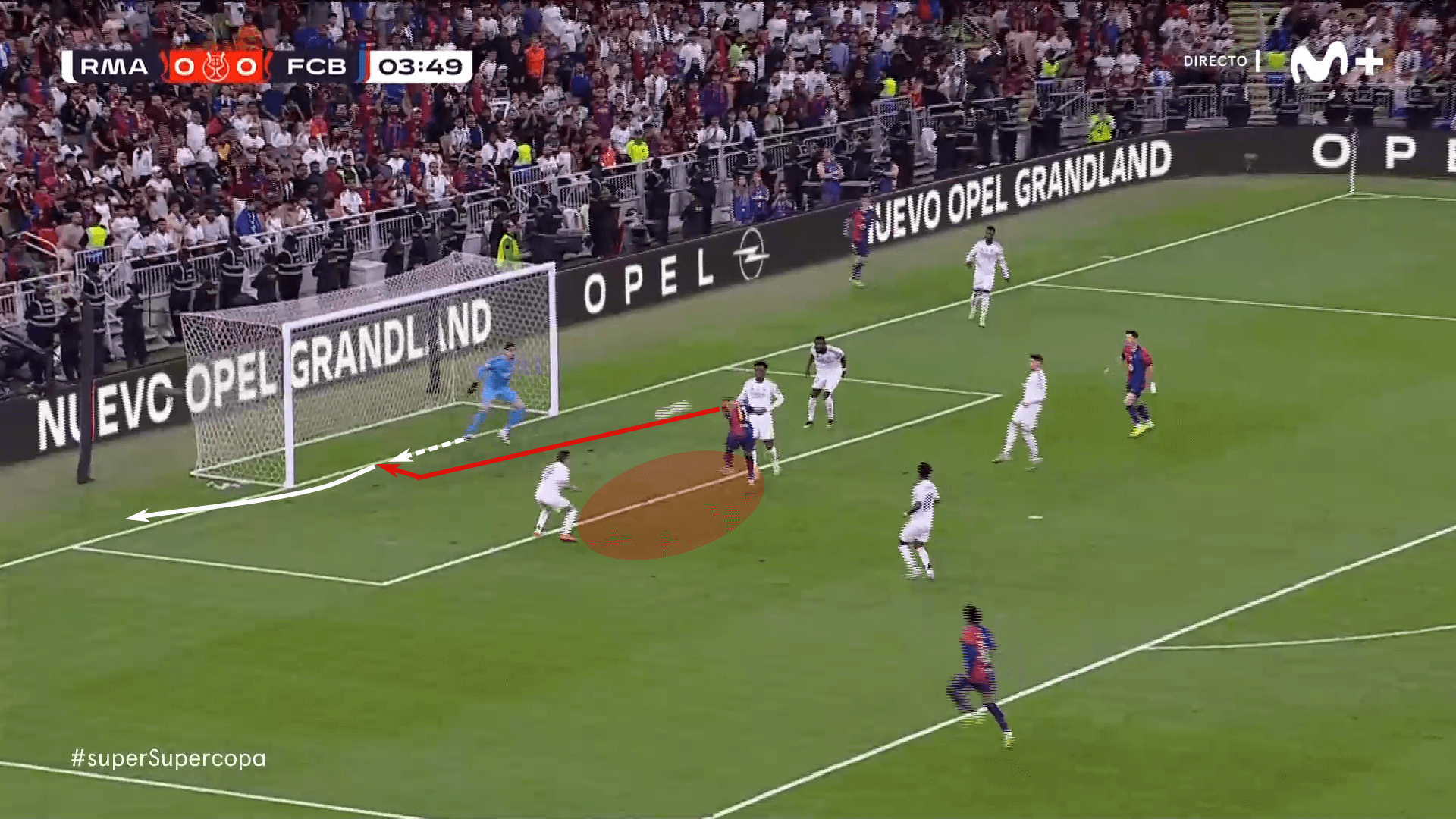
Those 2/4 and 3/5 gaps were an issue for Madrid all day.
Barcelona’s forwards, as well as Gavi, consistently popped into those spaces, as seen below.
While Gavi's turn was ultimately stopped before he could hurt Madrid, this sequence was a sign of things to come.
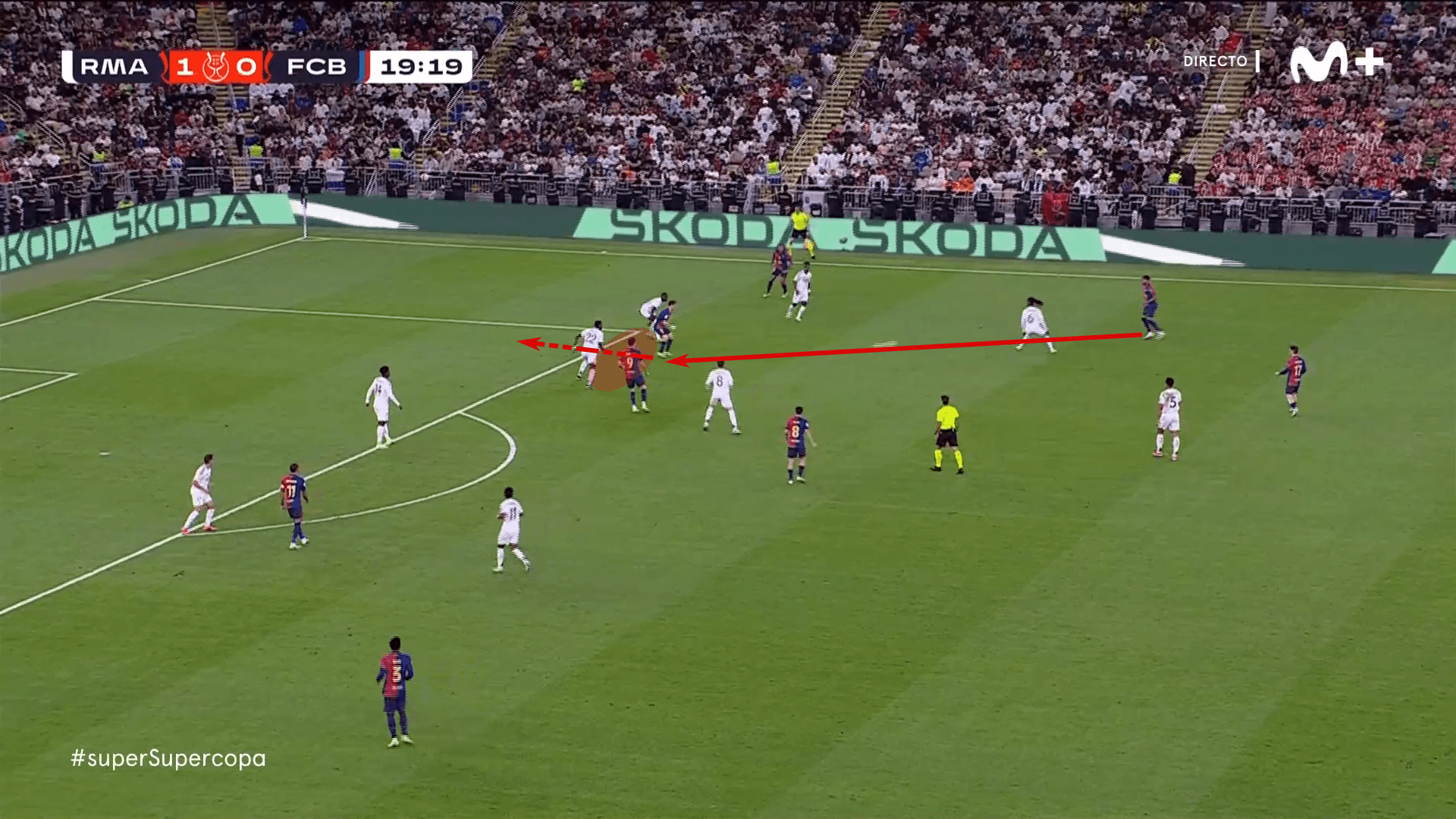
With players stationed high and wide, Barcelona consistently pulled Mendy away from his centreback support and closer to the touchline.
As he moved wider, the 3/5 cap extended.
That was the space Barcelona exploited throughout the match.
Mendy's game was disastrous.
He was often caught too far to the wings, allowing Barcelona to position themselves on his inside shoulder to receive and play forward.
Barcelona’s fantastic work in the final third was simply not matched by Madrid.
While Los Blancos had a few half chances while playing up a man, the most troubling blown opportunity came in the 24th minute, immediately after Barcelona equalised.
Even a simple 2v1, as seen in the image below, was botched by Madrid with Vázquez taking a shot rather than playing Rodrygo through to goal.
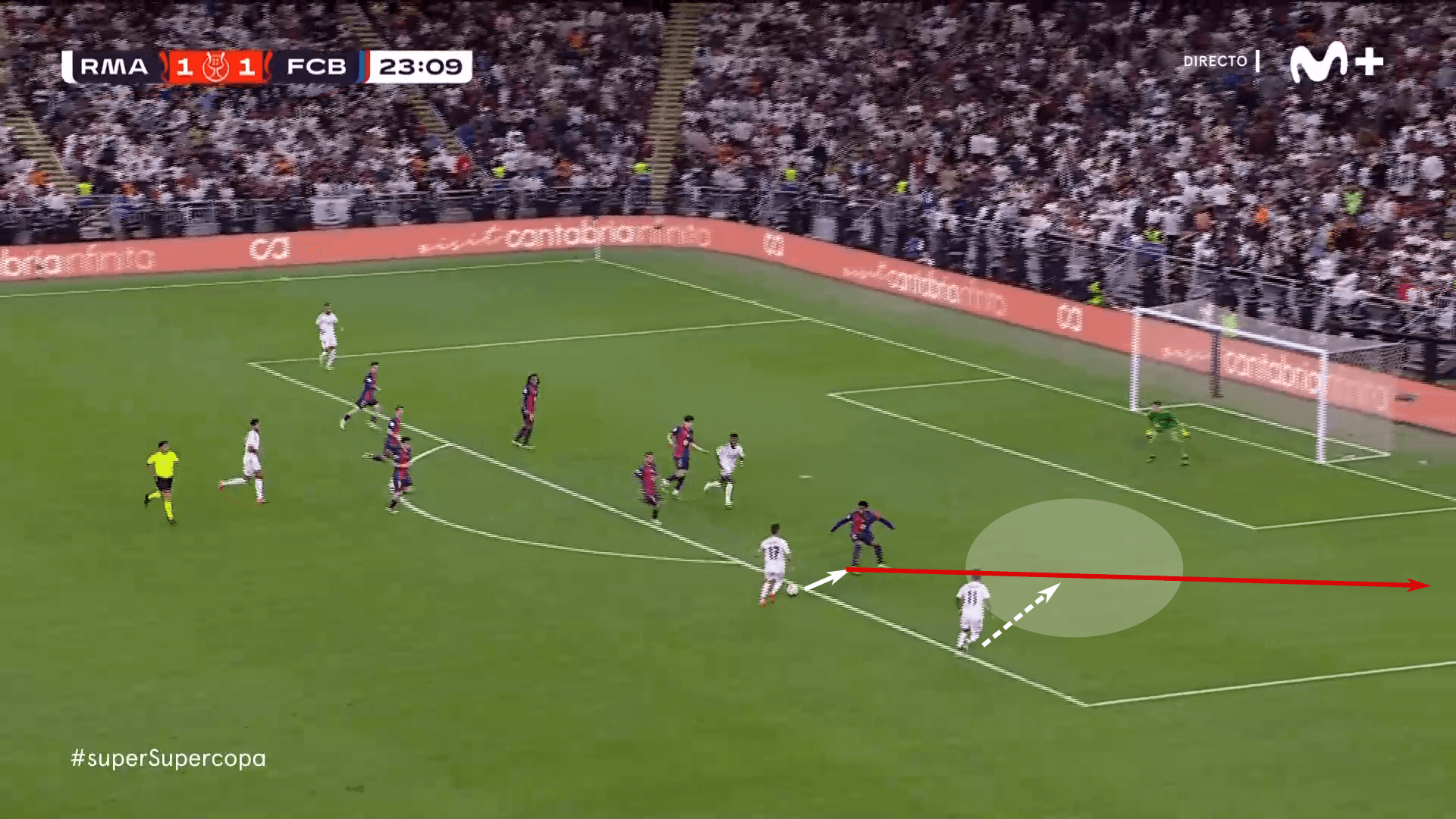
Another oddity, which we see in the image above as well as in Mbappé's opener, is the runs of Vinícius Júnior towards the ball when his support simply isn't needed.
Both in this case and the opening goal, his horizontal run pulls additional defenders toward the ball, complicating his teammate’s path to goal.
Whether the unnecessary runs or the lack of composure to finish off sequences with a shot, Madrid struggled to find the precision necessary as they attacked the box.
Barcelona, on the other hand, was ruthless throughout.
Conclusion
This was the type of result where anyone who missed the Supercopa de España might ask if Barcelona was that good or if Real Madrid was that bad.
To be fair, there's truth in both options.
Madrid gave Barcelona space to play through and behind the backlines.
La Blaugrana, we're more than happy to take what was given.
As our tactical analysis has shown, Real Madrid's press was very disorganised in this game.
Part of that is due to Barcelona’s intelligent movements off the ball, which stretched the press both horizontally and vertically.
Flick’s side created the space they wanted to attack.
They consistently produced dangerous opportunities once Barcelona got into the final third, whereas Real Madrid struggled to find the necessary quality in the final third.
The Super Cup heads to Barcelona, but both teams will surely be looking at more important prizes.
As we head into the second half of the La Liga campaign and each team position themselves for the Champions Leagueknockout rounds, Barcelona will gain the needed dose of confidence.
In contrast, Ancelotti and Madrid must quickly regroup at the drawing board.
This match was a thrashing, one that Barcelona and their fans thoroughly enjoyed.

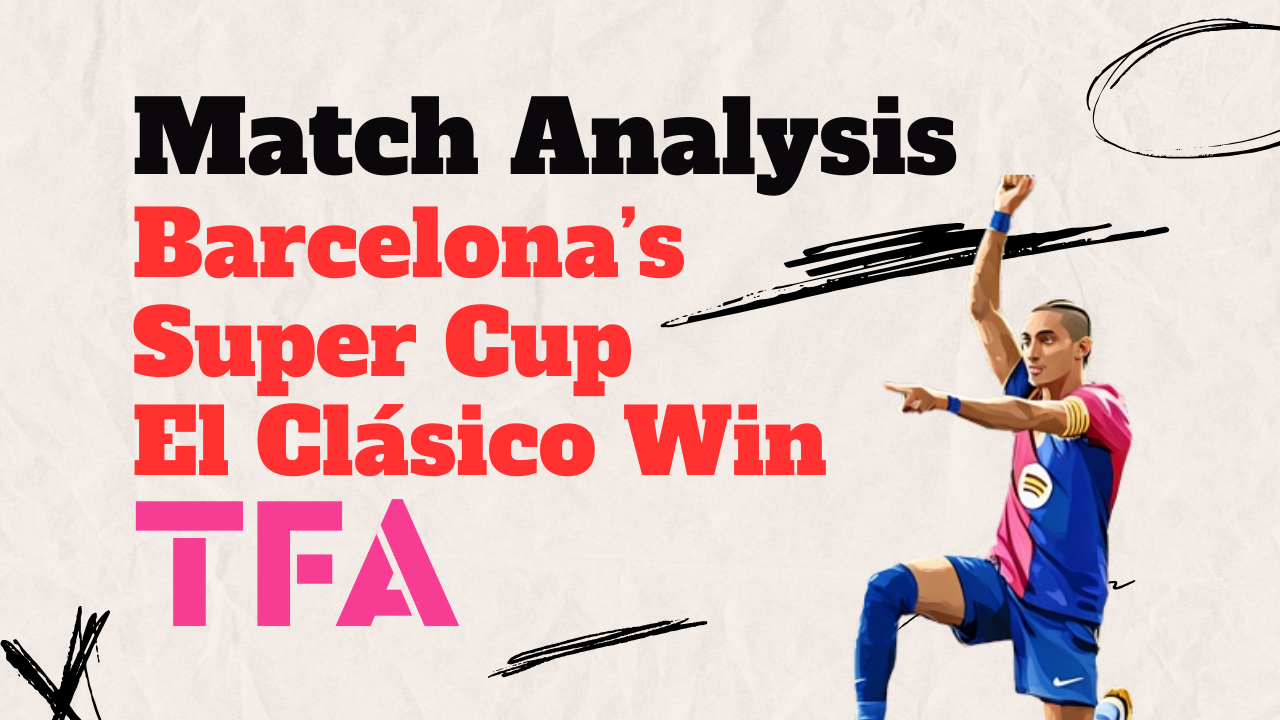

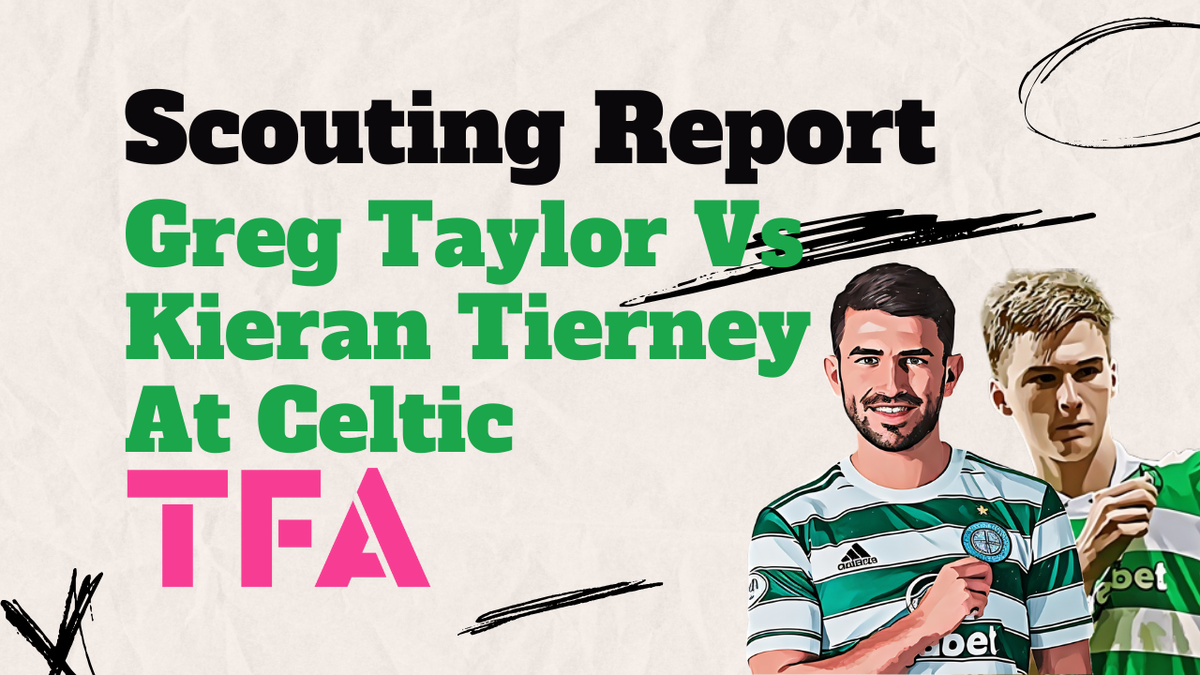
Comments